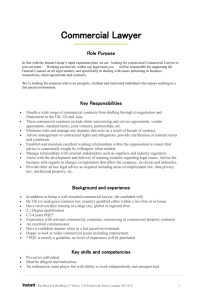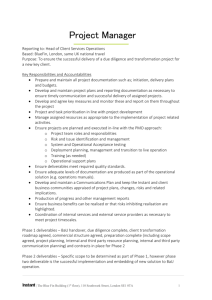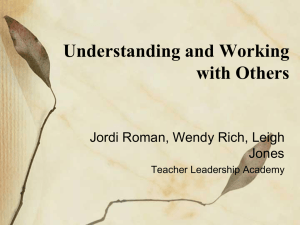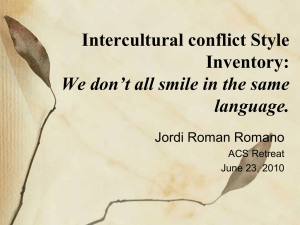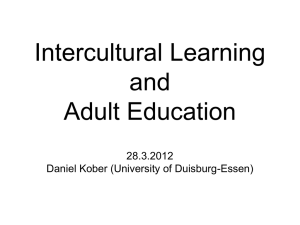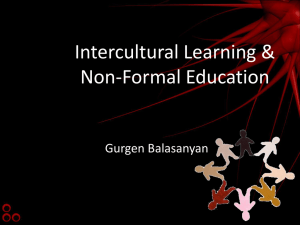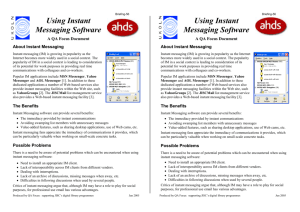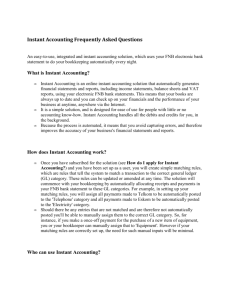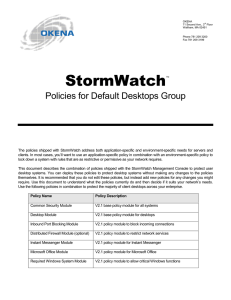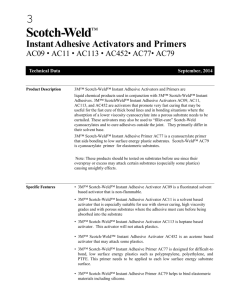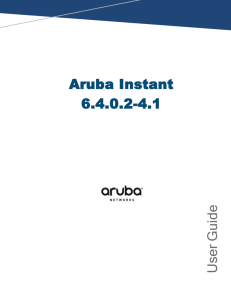20100318_Revised.UGR_Poster_2
advertisement
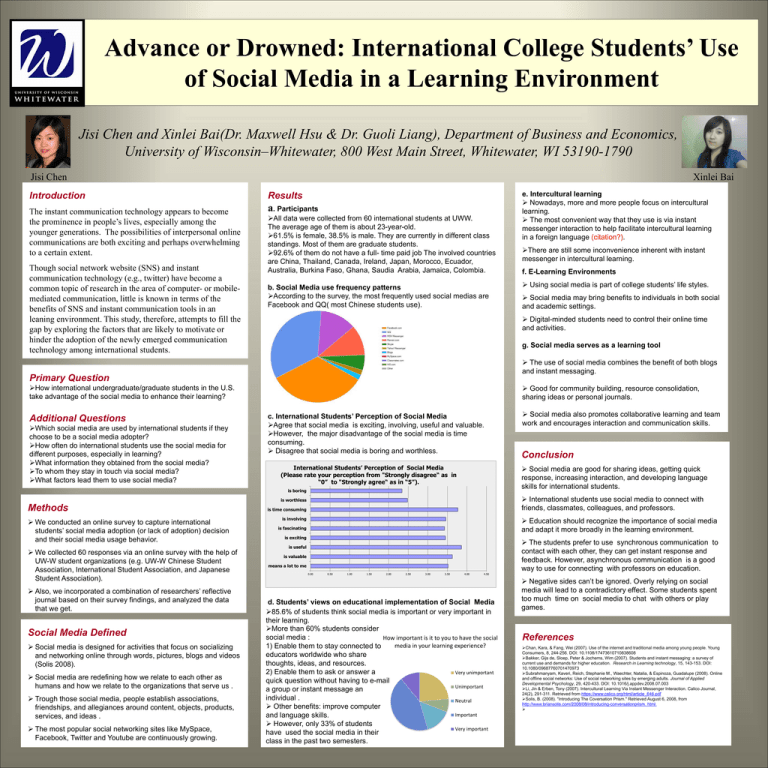
Advance or Drowned: International College Students’ Use of Social Media in a Learning Environment Jisi Chen and Xinlei Bai(Dr. Maxwell Hsu & Dr. Guoli Liang), Department of Business and Economics, University of Wisconsin–Whitewater, 800 West Main Street, Whitewater, WI 53190-1790 Jisi Chen Introduction The instant communication technology appears to become the prominence in people’s lives, especially among the younger generations. The possibilities of interpersonal online communications are both exciting and perhaps overwhelming to a certain extent. Though social network website (SNS) and instant communication technology (e.g., twitter) have become a common topic of research in the area of computer- or mobilemediated communication, little is known in terms of the benefits of SNS and instant communication tools in an leaning environment. This study, therefore, attempts to fill the gap by exploring the factors that are likely to motivate or hinder the adoption of the newly emerged communication technology among international students. Xinlei Bai Results a. Participants All data were collected from 60 international students at UWW. The average age of them is about 23-year-old. 61.5% is female, 38.5% is male. They are currently in different class standings. Most of them are graduate students. 92.6% of them do not have a full- time paid job The involved countries are China, Thailand, Canada, Ireland, Japan, Morocco, Ecuador, Australia, Burkina Faso, Ghana, Saudia Arabia, Jamaica, Colombia. b. Social Media use frequency patterns According to the survey, the most frequently used social medias are Facebook and QQ( most Chinese students use). We collected 60 responses via an online survey with the help of UW-W student organizations (e.g. UW-W Chinese Student Association, International Student Association, and Japanese Student Association). Also, we incorporated a combination of researchers’ reflective journal based on their survey findings, and analyzed the data that we get. Social Media Defined Social media is designed for activities that focus on socializing and networking online through words, pictures, blogs and videos (Solis 2008). Social media are redefining how we relate to each other as humans and how we relate to the organizations that serve us . Trough those social media, people establish associations, friendships, and allegiances around content, objects, products, services, and ideas . The most popular social networking sites like MySpace, Facebook, Twitter and Youtube are continuously growing. Social media may bring benefits to individuals in both social and academic settings. Good for community building, resource consolidation, sharing ideas or personal journals. c. International Students’ Perception of Social Media Agree that social media is exciting, involving, useful and valuable. However, the major disadvantage of the social media is time consuming. Disagree that social media is boring and worthless. International Students’ Perception of Social Media (Please rate your perception from "Strongly disagree“ as in “0” to "Strongly agree“ as in “5”). Social media also promotes collaborative learning and team work and encourages interaction and communication skills. Conclusion Social media are good for sharing ideas, getting quick response, increasing interaction, and developing language skills for international students. International students use social media to connect with friends, classmates, colleagues, and professors. is worthless We conducted an online survey to capture international students’ social media adoption (or lack of adoption) decision and their social media usage behavior. Using social media is part of college students’ life styles. The use of social media combines the benefit of both blogs and instant messaging. is boring Methods f. E-Learning Environments g. Social media serves as a learning tool How international undergraduate/graduate students in the U.S. take advantage of the social media to enhance their learning? Which social media are used by international students if they choose to be a social media adopter? How often do international students use the social media for different purposes, especially in learning? What information they obtained from the social media? To whom they stay in touch via social media? What factors lead them to use social media? There are still some inconvenience inherent with instant messenger in intercultural learning. Digital-minded students need to control their online time and activities. Primary Question Additional Questions e. Intercultural learning Nowadays, more and more people focus on intercultural learning. The most convenient way that they use is via instant messenger interaction to help facilitate intercultural learning in a foreign language (citation?). is time consuming is involving Education should recognize the importance of social media and adapt it more broadly in the learning environment. is fascinating is exciting The students prefer to use synchronous communication to contact with each other, they can get instant response and feedback. However, asynchronous communication is a good way to use for connecting with professors on education. is useful is valuable means a lot to me 0.00 0.50 1.00 1.50 2.00 2.50 3.00 3.50 4.00 4.50 d. Students’ views on educational implementation of Social Media 85.6% of students think social media is important or very important in their learning. More than 60% students consider social media : How important is it to you to have the social media in your learning experience? 1) Enable them to stay connected to educators worldwide who share thoughts, ideas, and resources. 2) Enable them to ask or answer a Very unimportant quick question without having to e-mail Unimportant a group or instant message an individual . Neutral Other benefits: improve computer Important and language skills. However, only 33% of students Very important have used the social media in their class in the past two semesters. Negative sides can’t be ignored. Overly relying on social media will lead to a contradictory effect. Some students spent too much time on social media to chat with others or play games. References Chan, Kara, & Fang, Wei (2007). Use of the internet and traditional media among young people. Young Consumers, 8, 244-256. DOI: 10.1108/17473610710838608 Bakker, Gijs de, Sloep, Peter & Jochems, Wim (2007). Students and instant messaging: a survey of current use and demands for higher education. Research in Learning technology, 15, 143-153. DOI: 10.1080/09687760701470973 Subrahmanyam, Kaveri, Reich, Stephanie M., Waechter, Natalia, & Espinoza, Guadalupe (2008). Online and offline social networks: Use of social networking sites by emerging adults. Journal of Applied Developmental Psychology, 29, 420-433. DOI: 10.1016/j.appdev.2008.07.003 Li, Jin & Erben, Tony (2007). Intercultural Learning Via Instant Messenger Interaction. Calico Journal, 24(2), 291-311. Retrieved from https://www.calico.org/html/article_646.pdf Solis, B. (2008). "Introducing The Coversation Prism." Retrieved August 6, 2008, from http://www.briansolis.com/2008/08/introducing-conversationprism. html.

